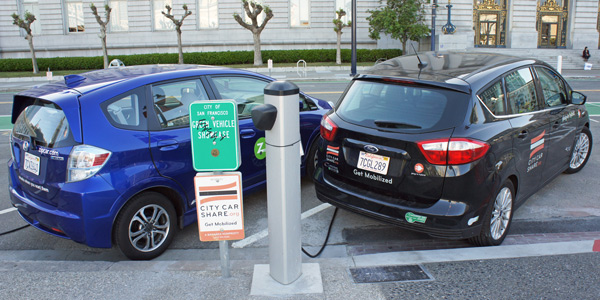By Jason Fordney
California will need between 229,000 and 279,000 electric vehicle chargers at locations other than single-family homes by 2025 to meet the state’s goals for adoption of zero-emission vehicles, the Energy Commission said in a new report.
The higher range of the estimate includes 133,000 workplace and public chargers, 9,000 to 25,000 fast chargers and 121,000 chargers at multifamily dwellings, the commission said. The numbers do not include chargers in single-family homes.
A March 2012 order by Gov. Jerry Brown directed the commission to support the goal of 1.5 million zero-emission vehicles on state roadways by 2025. Another January 2018 order by Brown called for the construction and installation of 250,000 zero-emission vehicle chargers, including 10,000 DC fast chargers, by 2025.
According to the new CEC study, the state’s goal is to allow drivers to maximize the number of electric miles they can drive, provide guidance on plug-in electric vehicle (PEV) and plug-in hybrid charging, and ensure the effectiveness of private and public sector investments. As of the end of last year, the state had about 14,000 public chargers — 1,500 of them DC fast chargers — serving 350,000 PEVs.
For the study, CEC staff worked with the National Renewable Energy Laboratory to develop a computer simulation tool known as the Electric Vehicle Infrastructure Projection Tool (EVI-Pro). The commission plans to add an EVI-Pro portal to its website to allow users to view charging station quantities, load shapes, infrastructure cost estimates and other information.
At a CEC workshop on Tuesday, analysts discussed three central questions around charging infrastructure: how many chargers to deploy, what kind of chargers and where to locate them. A big part of determining where to place chargers is understanding the behavior of vehicle operators and studying patterns such as worker commutes and rural versus urban settings.
“What we’re really talking about is trying to reduce range anxiety as a barrier to increased PEV sales,” NREL’s Eric Wood, one of the study’s authors, said at the workshop.
EVI-Pro focuses on behaviors of mainstream drivers, such as origins, destinations and schedules, as opposed to those of early EV adopters. Mainstream drivers are more likely to favor convenience and less likely to alter driving habits, for example. The modeling also studied how different charging locations such as home or work might be chosen based on the price of electricity, and how users charging for free at work might block other chargers and drive up costs of workplace charging.
The study used four major inputs: vehicle attributes, charger attributes, county-level household travel data and composition of the vehicle fleet. It calculated several charger-per-1,000-PEVs ratios under differing technology and market scenarios.
The transportation sector is the largest polluter in California, responsible for 80% of nitrogen oxide emissions and 90% of diesel particulates. Including indirect emissions from fuel refining and production, transportation accounted for “nearly half” of the state’s greenhouse gas emissions as of 2015, the report said.
The study showed that weekday charging peaks occur when vehicles arrive at work in mornings and when they arrive home in evenings. By 2025, workplace chargers on weekdays will draw more than 200 MW at 9 a.m. and residential chargers nearly 900 MW at 8 p.m. By 2025, aggregate demand from residential, workplace and fast-chargers will push up demand by 500 MW from 4 to 7 p.m., with a maximum demand of nearly 1,000 MW before 8 p.m.
The commission said that an important conclusion of the study is assuring drivers that charging infrastructure will be visible, accessible and reliably maintained, with real-time networking technologies being a valuable tool. Networked technologies will enable shared usage of chargers and reduce the size of the network needed to support the growing electric fleet.




